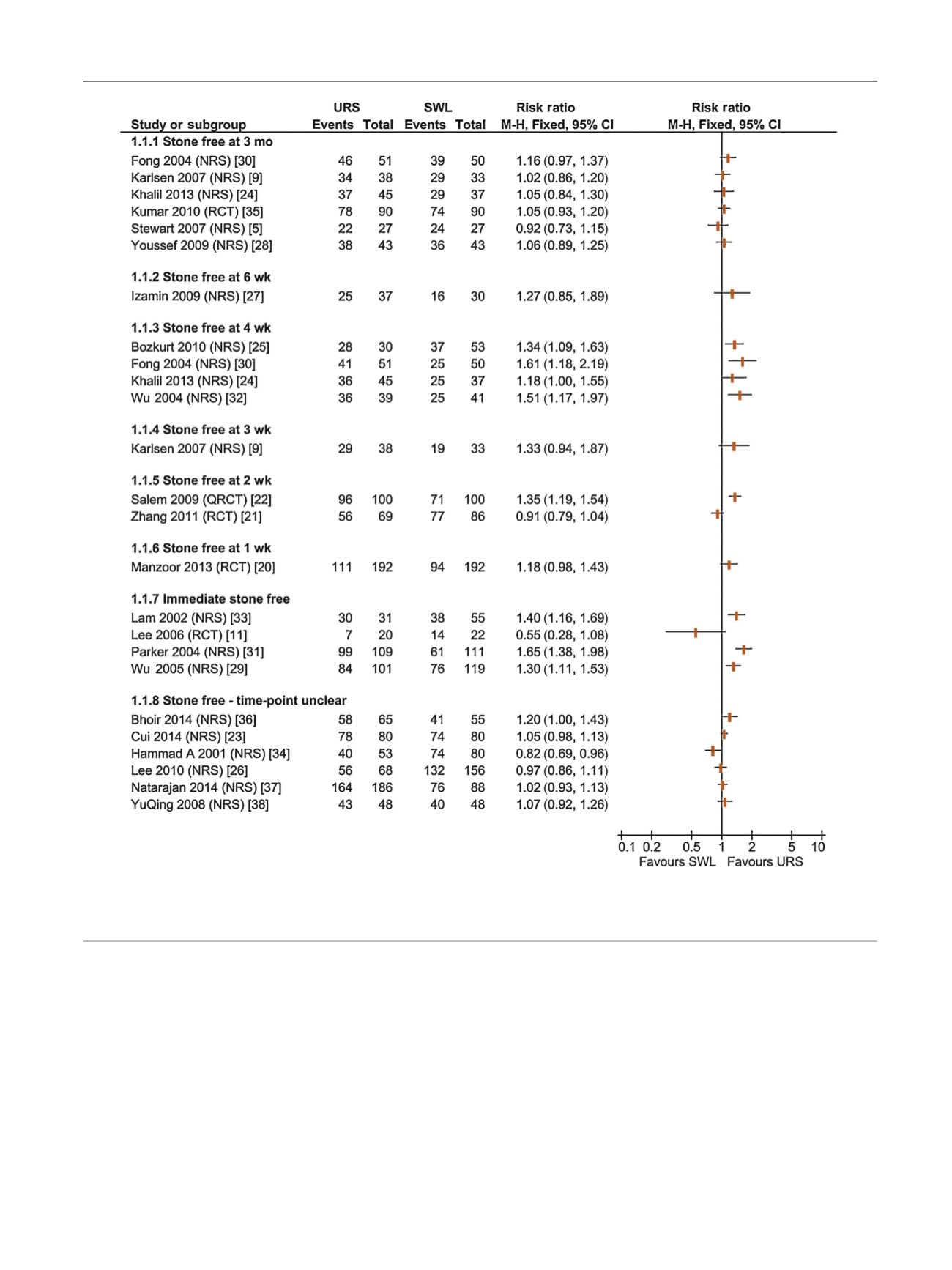

<
10 mm, three studies showed SFR to be superior with URS
[26,31,33], whilst five studies showed no difference
[22,27– 29,35].
3.6.
Complications
Complications of treatment were reported on in 14 out of
22 studies; two RCTs
[11,35], one QRCT
[22], and nine NRSs
[9,23–26,28–33]. In eight of these studies, it was possible to
group the reported complications into Clavien-Dindo
Grades
[9,11,22,24,26,28,30,31]and grades 3 are reported
in the forest plot in
Fig. 2. Lee et al
[11]reported
significantly higher complication rates in the URS group
compared with the SWL group. The reverse finding was
reported by Salem
[22]and Lee et al
[26]albeit in both
studies the higher Clavien-Dindo Grade 3 in the SWL arms
were solely due to stone migration emergency room visits
with some requiring JJ stent insertion. The remaining five
studies
[9,24,28,30,31]failed to show any significant
difference in Clavien-Dindo Grade 3 complications. No
cases of ureteric injury were reported in any patients
undergoing SWL, but ureteric injury rates after URS were as
[(Fig._1)TD$FIG]
Fig. 1 – Forest plot (stone free rate of included intergroup studies).
CI = confidence interval; NRS = nonrandomised studies; QRCT = quasi-randomised controlled trial; RCT = randomised controlled trial; SWL = shock wave
lithotripsy; URS = ureteroscopy.
E U R O P E A N U R O L O G Y 7 2 ( 2 0 1 7 ) 7 7 2 – 7 8 6
779
















